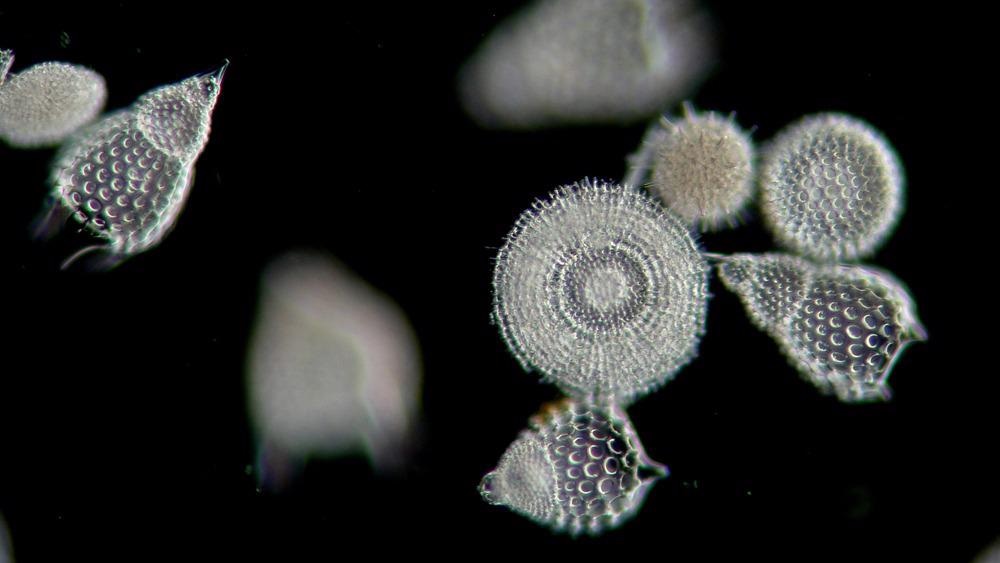May 4 2021
Diatoms are small unicellular plants that do not grow bigger than half a millimeter. These plants populate the surface water of the world’s oceans where penetration of sunlight is abundant.

Image Credit: Diana Will/Shutterstock.com
In spite of having a modest size, the diatoms are considered as one of the strongest resources in the world for carbon dioxide (CO2) removal from the air. Now, they eliminate, or “fix,” 10 to 20 billion metric tons of CO2 annually with the help of photosynthesis.
However, there is not much knowledge gained regarding which biological mechanisms are used by the diatoms, and if these processes may turn out to be less effective with increasing temperatures, ocean acidity, and especially CO2 concentrations.
A new study published in the journal Frontiers in Plant Science has demonstrated that diatoms largely make use of one pathway to concentrate CO2 in the proximity of carbon fixing enzyme and that they continuously do this even when the CO2 concentrations are quite high.
We show that marine diatoms are super smart in fixing atmospheric CO2 even at the present-day level of CO2—and the variability in surface seawater CO2 levels did not impact the gene expression and abundance of the five key enzymes used in carbon fixation. This answers a key question about how marine diatoms may respond to the future increase in atmospheric CO2 levels.
Dr Haimanti Biswas, Study Group Leader, National Institute of Oceanography-Council of Scientific and Industrial Research
To concentrate CO2 obtained from the air, or water, and converting it into organic carbon, the plant kingdom has developed an extensive range of mechanisms. Thus, plants tend to convert CO2 into glucose and other carbohydrates, which are eventually used as energy storage and building blocks.
However, such mechanisms have different weaknesses and strengths. A slightly ironic fact is that the only carbon-fixing enzyme, called RuBisCO, is dreadfully inefficient at fixing CO2 and thus plants must keep CO2 levels high when this enzyme exists.
To gain better insights into which mechanisms are utilized by the diatoms to concentrate CO2, Biswas together with her collaborators, Drs Chris Bowler and Juan Jose Pierella Karluich from the Institut de Biologie de I’Ecole Normale Supérieure, Paris, France, extracted a data set from the Tara Oceans research expedition.
The international Tara expedition has gathered marine plankton samples from all over the world for many years (2009 to 2013). These include over 200 metagenomes (which exhibit the abundance of the genes that are accountable for the five key enzymes) and more than 220 metatranscriptomes (exhibiting expression of the genes for the five key enzymes) from diatoms of various size classes.
Biswas along with her colleagues had a particular interest in finding out how frequently the genes of five main carbon-fixing enzymes are present, and whether there were any variations in their quantity and expression levels based on location and conditions.
Of all the samples quantified, one enzyme was approximately 10 times more abundant compared to any of the other enzymes. Moreover, this enzyme known as carbonic anhydrase is particularly informative since it verifies that diatoms are pumping actively in dissolved CO2 within the cell, rather than converting CO2 initially in a biochemical manner.
Moreover, the researchers noted complicated and different patterns of the gene expression of key enzymes, which differed based on temperature and latitude. The team believes that more can be learned with the help of new datasets from more extensively traveled expeditions in the future.
So far, our study indicates that despite variability in CO2 levels, these tiny autotrophs are highly efficient in concentrating CO2 inside the cell. That’s the probable reason for their ability to fix nearly one-fifth of the global carbon fixation on earth.
Dr Haimanti Biswas, Study Group Leader, National Institute of Oceanography-Council of Scientific and Industrial Research
Journal Reference:
Karlusich, J. J. P., et al. (2021) Carbon Dioxide Concentration Mechanisms in Natural Populations of Marine Diatoms: Insights From Tara Oceans. Frontiers in Plant Science. doi.org/10.3389/fpls.2021.657821.